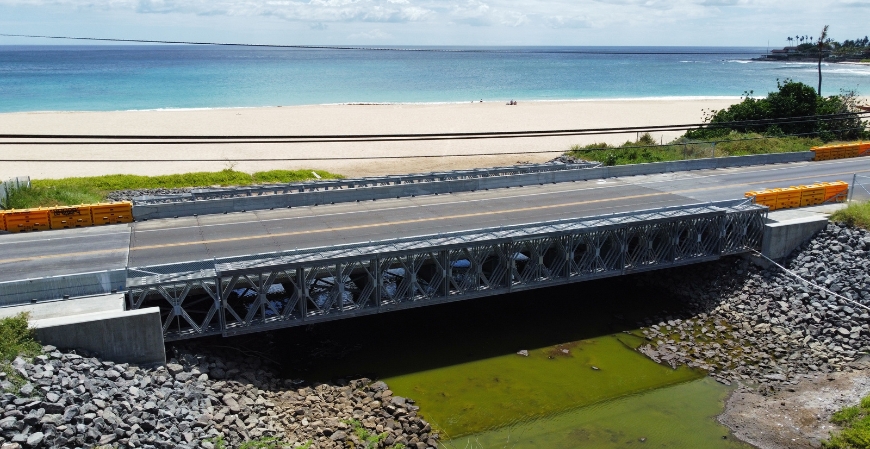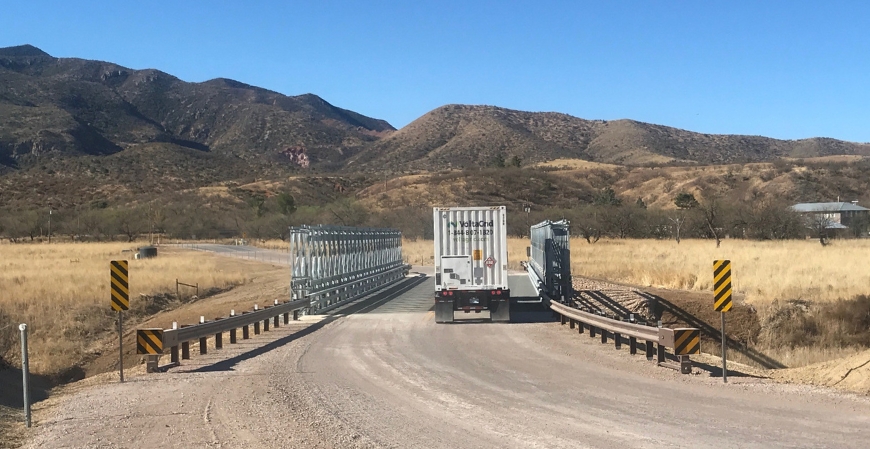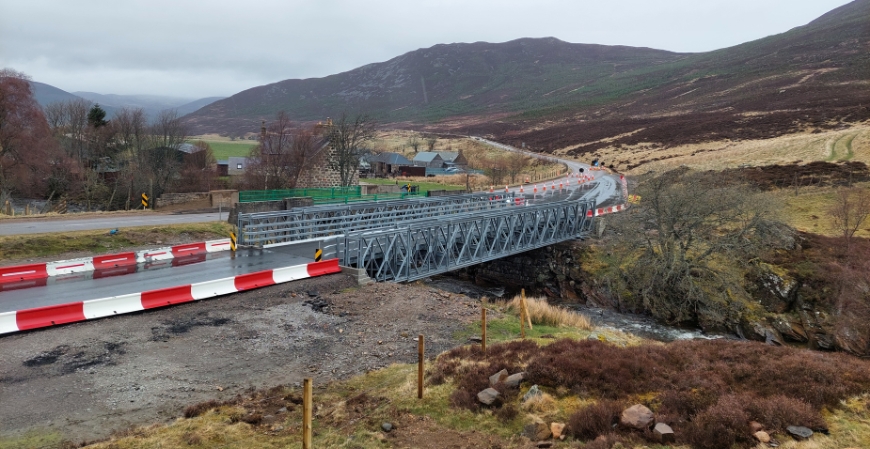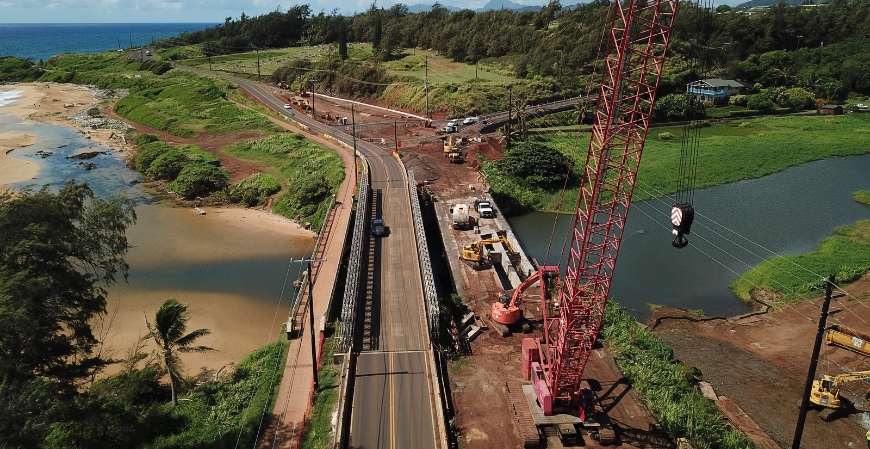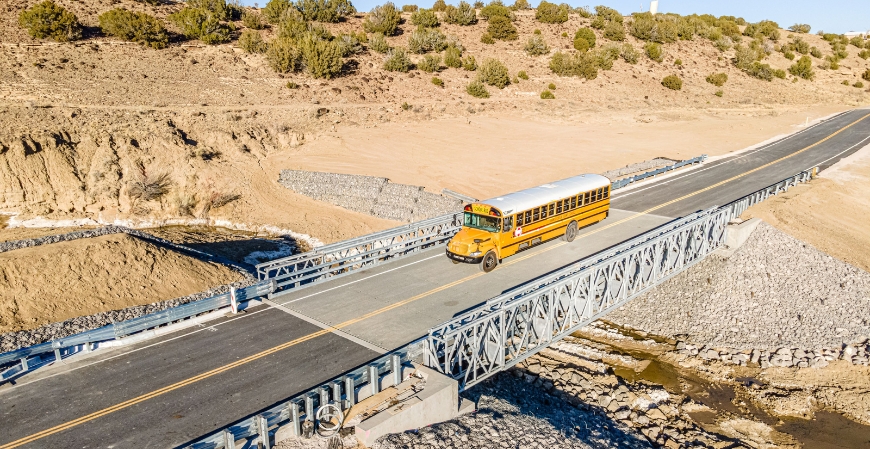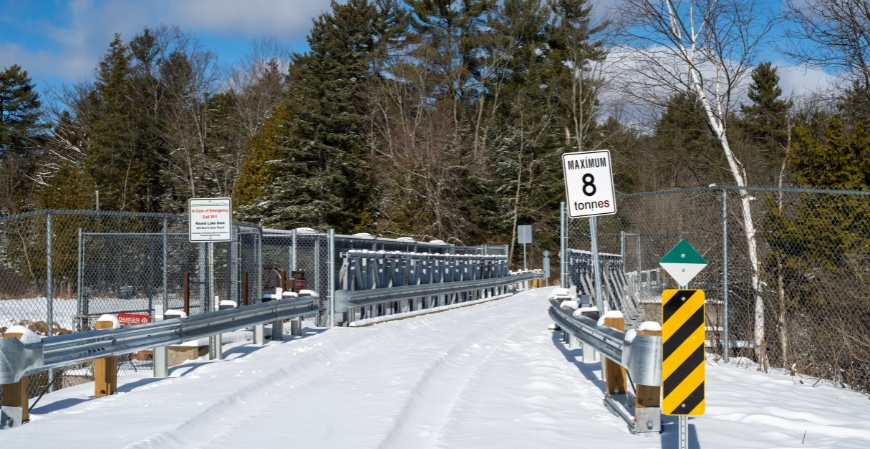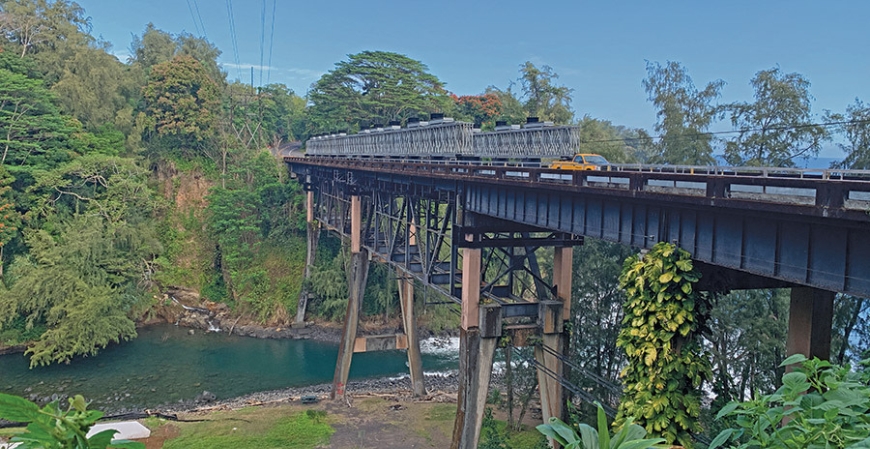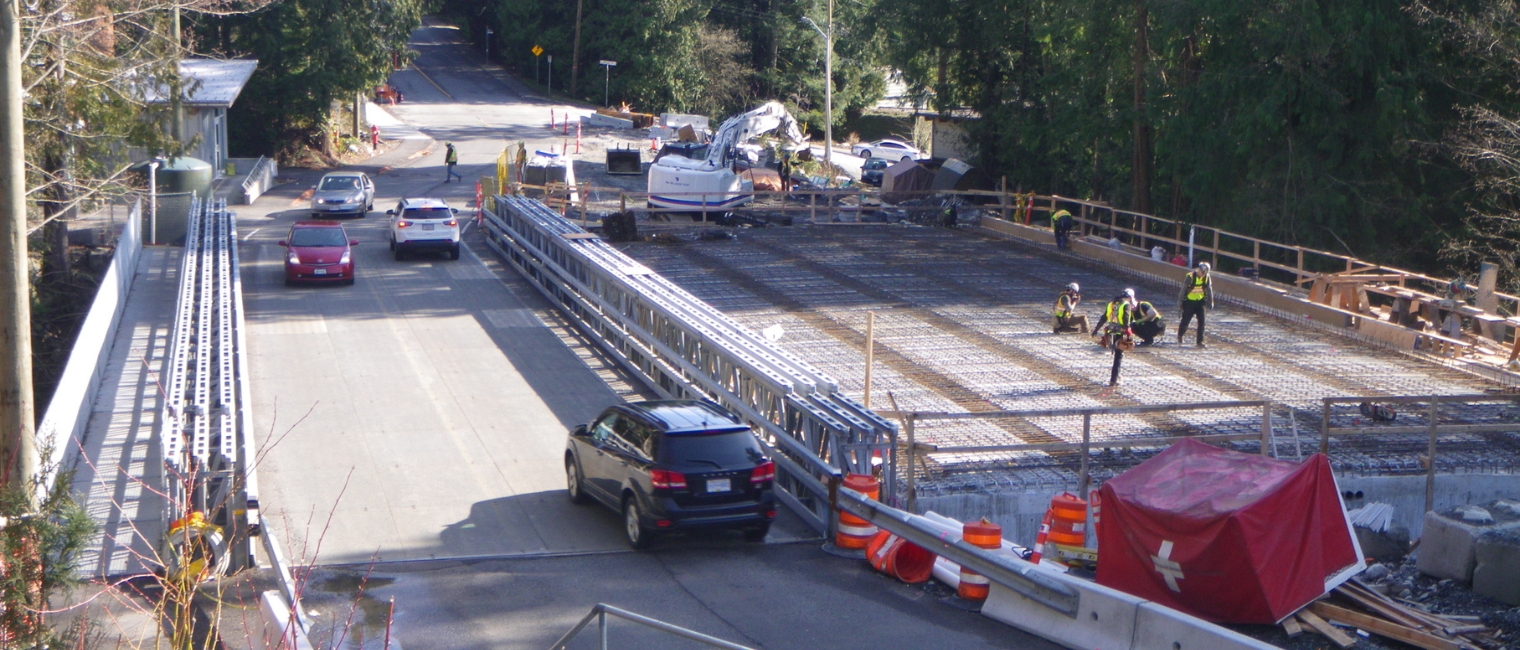
Detour bridge installed quickly despite confined work zone
When it became necessary to replace the 60-year-old Montroyal Bridge over Mosquito Creek, in the District of North Vancouver in British Columbia, plans specified a detour structure be in place ahead of and for the duration of the construction. Because the construction site is in close proximity to a fire station, it was critical that a route remain open to provide continuous passage of emergency vehicles.
A two-lane Acrow bridge was chosen over other detour options for a number of reasons. The modular structure provided an ideal solution for the very tight worksite on this project, and Acrow’s lightweight components allowed for staged installation.
The launching and erection of the detour bridge posed numerous challenges. Because no room was available to stage components on-site, the Acrow components were delivered to a laydown area away from the site and brought to the work zone as needed. The build area was extremely limited on the west approach, so the bridge was erected on rollers, with additional rollers on top of a temporary launching pier — necessary for ease of erection and a safe launch.
For the final launch, a large crane positioned on the east approach was attached to the east end of the bridge. The structure was moved to it’s final position and held 6.6 feet (2m) above the east bearingfs while the temporary pier was removed, before being lowered and set on both abutment bearings.
The Acrow bridge installation was completed in less than three weeks and the rented structure was in place for approximately one year

